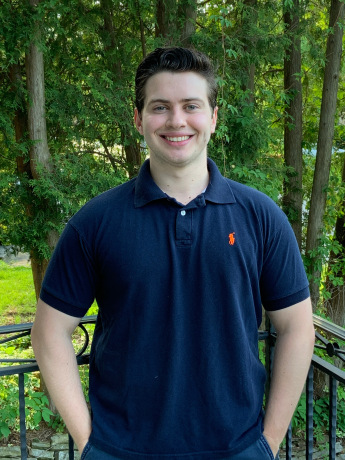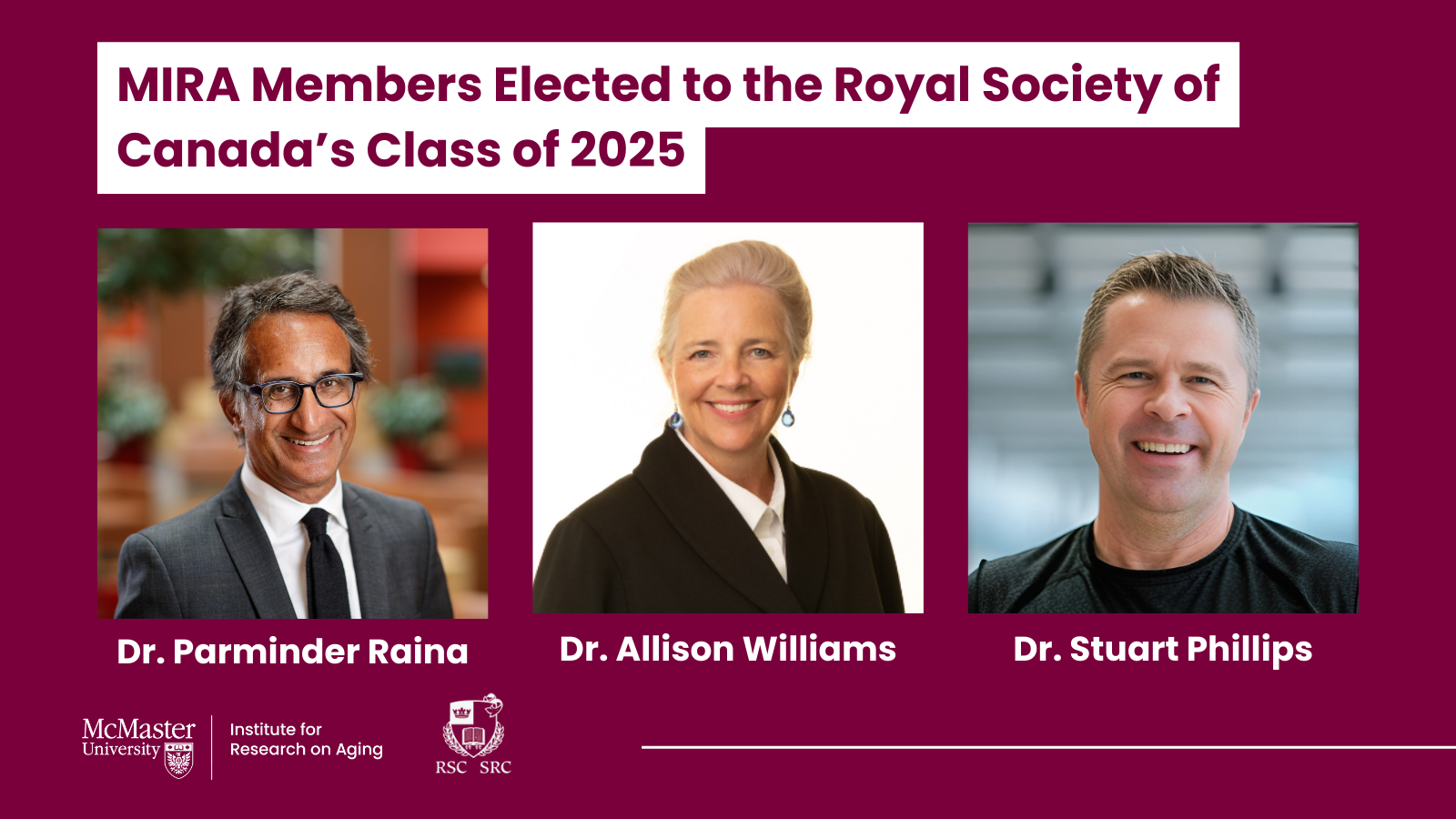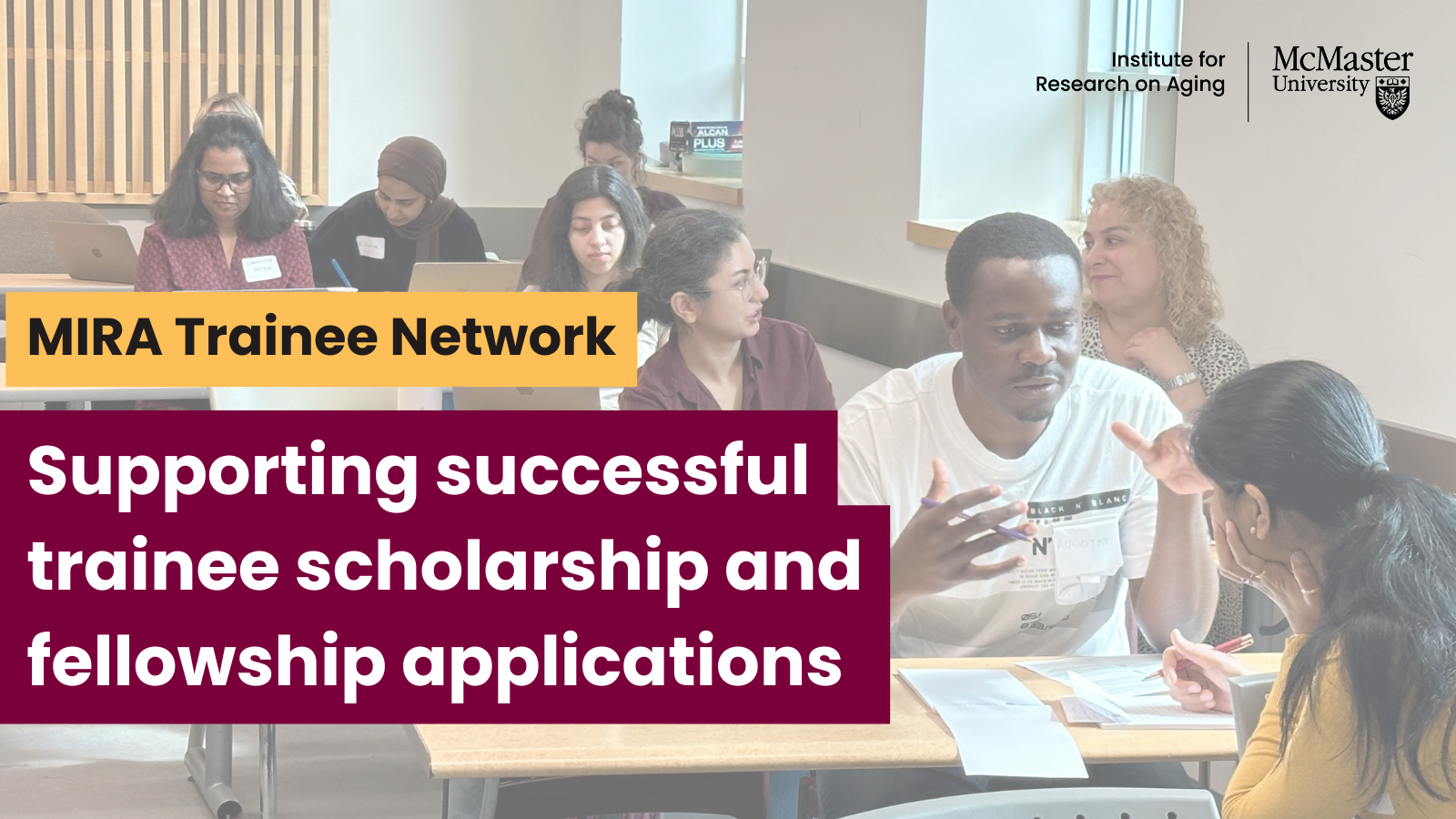
Published: June 10, 2020 | By Emily Dunford
Matthew Fuda is currently completing a MIRA Undergraduate Summer Research Fellowship (USRF) in the Faculty of Health Sciences under the supervision of Dr. Mark Tarnopolsky. During this interview, Matthew spoke to us about his undergraduate research and involvement with the MIRA Trainee Network.
Q: What brought you to be part of the MIRA trainee network?
There were many different factors that played a role in bringing me to be a part of the MIRA trainee network. Above all else was the desire to connect with other researchers and learn more about the study of aging. There are many disciplines that work together to study aging, allowing me to develop a more holistic view of the research. This chance to learn more about other research is why I joined the MIRA trainee network.
Q: Tell us about the research project you are currently working on.
Under the supervision of Dr. Mark Tarnopolsky, we are assessing the effects of multi-nutrient supplementation and low-intensity resistance training on skeletal muscle function, mass, and strength in aging individuals. Interestingly, a hallmark of sedentary aging involves mitochondrial dysfunction. Therefore, my project focuses on assessing the effects of these interventions on mitochondrial function in an attempt to understand if mitochondrial dysfunction is responsible for muscle loss and if any improvements in muscle function can be attributed to better mitochondrial function.
Q: How does it relate to the aging population?
It is well known that muscle mass and strength decreases with advanced age, especially when the individual is sedentary. This in turn can compromise mobility in the aging population and consequently infringe upon their independency. Therefore, we are researching how exercise and supplementation can attenuate muscle loss that comes with aging so that individuals can maintain their independence as they age.
Q: Can you explain more about the interventions you had the older adults complete?
The participants in the study all underwent the same low-intensity exercises for a 12 week period. They had to perform six upper and six lower body exercises using resistance bands. These included, but were not limited to: lateral raises, bicep curls, triceps extensions, calf raises, knee extensions, and chair squats. The exercises were considered low-intensity because they were performed with resistance bands and not weights or machines.
Q: Could you describe some of the mitochondrial assessments that you completed, or will be completing?
We have completed and will be completing several assessments of mitochondrial function and number. Some of these include mitochondrial enzyme activity assays as well as analyzing mRNA expression and protein content of the mitochondrial electron transport chain complexes.
Q: What is the ultimate goal/purpose of this research?
The ultimate goal of our study is to better the quality of life for aging individuals through improvements in mobility. Better mobility will allow older people to maintain their independence by permitting less of a reliance on mobility aids in their daily lives. If we can help people of advanced age keep their independence, they will hopefully have a better quality of life and enjoy more freedom in their later years.
Q: How can this research/knowledge be applied to have a real-world impact?
Home-based low-intensity exercise is something that can be performed throughout most of one’s lifetime in the real world quite easily. Therefore, it is our hope that our study illustrates the beneficial effects of exercise on muscle function so that many individuals will consider it in their daily life as a means to improve their own health and longevity.
Q: Do you think your involvement with the MIRA Trainee Network has changed your thoughts on research on aging?
I believe it has changed the way I view research on aging. This is a field that I did not truly know much about or have much of an appreciation for before I learned about MIRA. Once I joined the organization I was able to observe all the excellent research on aging, which further developed my interest in the field and made me value it even more.
Q: What is your favourite aspect of research? Do you have any tips for students who are interested in an undergraduate summer research assistant with MIRA?
There is one aspect of research that I have truly enjoyed in the short time I have been doing it and that is the opportunity to collaborate with individuals to work towards solving a problem. I enjoy being a part of a team that shares the same passion for science and research as me. The MIRA USRF has been a great opportunity that has allowed me to experience this aspect of research and is something I highly recommend to other undergraduate students. I would advise those interested in applying to get involved in research early in their undergrad so that they can build a strong relationship with their supervisor and apply to the MIRA USRF. I also suggest that these students keep an eye out for MIRA events, so they can be aware of any other research opportunities to become a part of. It is a great experience and one I highly advise passionate undergraduate researchers to become involved in.
Thank you, Matthew, for discussing your exciting research. If you have an interest in Matthew’s research, please contact him at fudam@mcmaster.ca.
This ​blog post was first published by the MIRA Trainee Network. Read the original article

